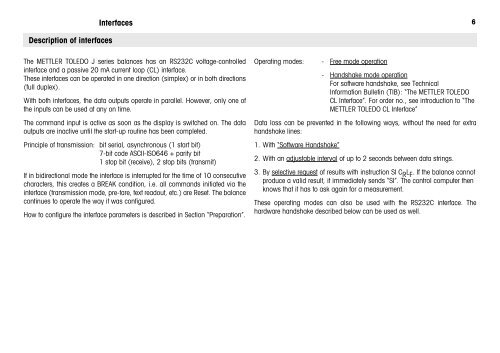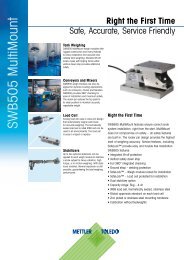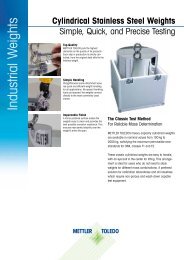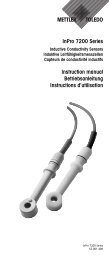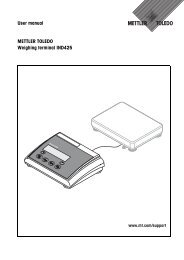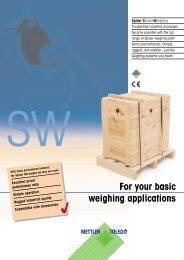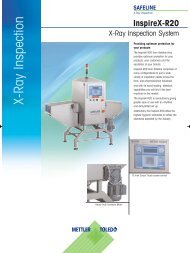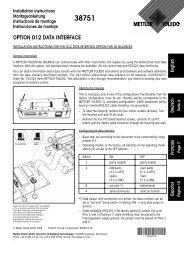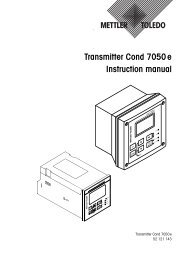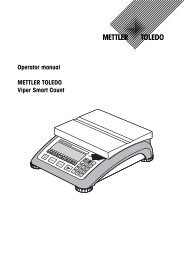Operating instructions Bidirectional Data Interface ... - Mettler Toledo
Operating instructions Bidirectional Data Interface ... - Mettler Toledo
Operating instructions Bidirectional Data Interface ... - Mettler Toledo
You also want an ePaper? Increase the reach of your titles
YUMPU automatically turns print PDFs into web optimized ePapers that Google loves.
<strong>Interface</strong>s<br />
6<br />
Description of interfaces<br />
The METTLER TOLEDO J series balances has an RS232C voltage-controlled<br />
interface and a passive 20 mA current loop (CL) interface.<br />
These interfaces can be operated in one direction (simplex) or in both directions<br />
(full duplex).<br />
With both interfaces, the data outputs operate in parallel. However, only one of<br />
the inputs can be used at any on time.<br />
The command input is active as soon as the display is switched on. The data<br />
outputs are inactive until the start-up routine has been completed.<br />
Principle of transmission: bit serial, asynchronous (1 start bit)<br />
7-bit code ASCII-ISO646 + parity bit<br />
1 stop bit (receive), 2 stop bits (transmit)<br />
If in bidirectional mode the interface is interrupted for the time of 10 consecutive<br />
characters, this creates a BREAK condition, i.e. all commands initiated via the<br />
interface (transmission mode, pre-tare, text readout, etc.) are Reset. The balance<br />
continues to operate the way it was configured.<br />
How to configure the interface parameters is described in Section “Preparation”.<br />
<strong>Operating</strong> modes: - Free mode operation<br />
- Handshake mode operation<br />
For software handshake, see Technical<br />
Information Bulletin (TIB): “The METTLER TOLEDO<br />
CL <strong>Interface</strong>”. For order no., see introduction to “The<br />
METTLER TOLEDO CL <strong>Interface</strong>”<br />
<strong>Data</strong> loss can be prevented in the following ways, without the need for extra<br />
handshake lines:<br />
1. With “Software Handshake”<br />
2. With an adjustable interval of up to 2 seconds between data strings.<br />
3. By selective request of results with instruction SI C R L F . If the balance cannot<br />
produce a valid result, it immediately sends “SI”. The control computer then<br />
knows that it has to ask again for a measurement.<br />
These operating modes can also be used with the RS232C interface. The<br />
hardware handshake described below can be used as well.


